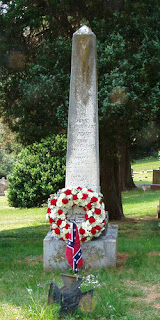Elizabeth Van Lew
The White House of the Confederacy
Elizabeth Van Lew of Richmond, although from a good family, was an ardent Unionist who refused to leave town even as the Confederate government took up residence. Her continued devotion to the Union cause was considered just another of the eccentricities of the woman her neighbors came to call “Crazy Bet”. Van Lew began to accentuate her eccentricities. As she walked along the street, she mumbled and hummed to herself, head bent to one side, holding imaginary conversations. Her disguise served her well as she set up a wide reaching spy ring within the Confederate capital, and some say within the Confederate White House itself.
Van Lew began visiting Richmond’s Libby Prison, where Union POWs were imprisoned. As a humanitarian gesture, Van Lew brought food, medicine, and books to the prisoners. She came out with military information. Newly arrived Union prisoners secretly recounted the strength and dispositions of Confederate troops they had seen on their way from the front to Richmond. As the war progressed Van Lew was able to place fellow Union sympathizers within the Confederate War and Navy Departments, and regularly smuggled messages out of Richmond in hollow eggs. General Grant would later say of her efforts, “You have sent me the most valuable information received from Richmond during the war.”
Van Lew’s most daring purported accomplishment remains shrouded in mystery and involved insinuating one of her former servants, Mary Elizabeth Bowser (also known as Mary Jane Richards) into the Confederate White House. Bowser had been a slave of the Van Lew family, but Van Lew freed her and sent her North to be educated many years before the war. When Van Lew established her spy ring she asked Bowser to return and work with her for the Union. Van Lew obtained a position for Bowser as a servant in the Confederate White House through the recommendation of a "friend" who provided supplies to that household. Bowser reported conversations she overheard and the content of documents she was able to read while working in the house. Another Union spy, Thomas McNiven, noted that Bowser had a photographic memory and could report every word of the documents she saw. Stories about Bowser appeared as early as May 1900 in Richmond newspapers. In a 1910 interview with Van Lew’s niece, Bowser was revealed as being part of the spy ring. Jefferson Davis' wife, Varina, publicly denied that a black female spy could have infiltrated the Confederate White House and denied any knowledge of such a person as Mary Elizabeth Bowser. Bowser was inducted into the US Army Intelligence Hall of Fame at Fort Huachuca, Arizona, on 30 June 1995.
When the Union army captured Richmond in April 1865, Van Lew was the first person to raise the U.S. flag in the city. After the war she insisted, “I'm not a Yankee”, maintaining that she was only a good Southerner, holding to an old Virginia tradition of opposition to human bondage.
My titles on Amazon
My titles at Barnes & Noble
The best reading
experience on your Android phone or tablet, iPad, iPhone, Mac, Windows 8 PC or
tablet, BlackBerry, or Windows Phone.












